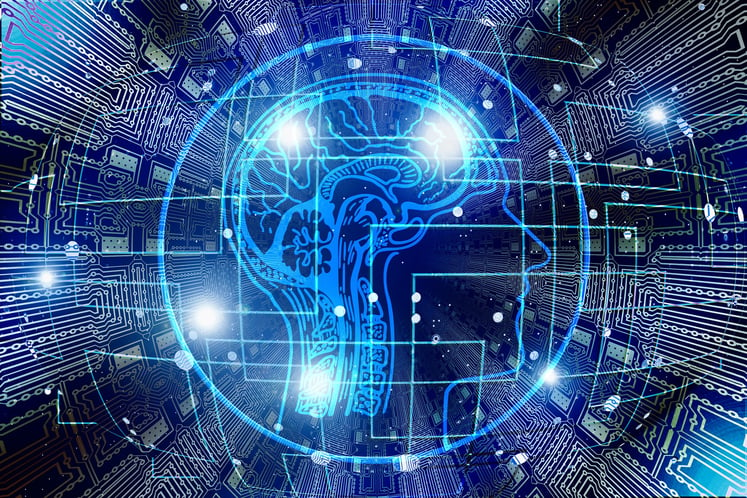Key Tech Trends 2018

David W. Cearley, vice president and Gartner fellow
Gartner has outlined three buckets of 2018 technology trends and their characteristics.
I. Intelligent.
Artificial intelligence (AI) and machine learning are seeping into virtually every technology to enable systems that are self-educating, self-healing, dynamic and proactive.
1. AI foundation. “Artificial intelligence and machine learning are increasingly a foundation component of all apps, and all of the services and all the things in our world around us,” Cearley said. While organizations are interested in AI, many have yet to use it in any production-ready way. A recent Gartner survey showed that 59% of organizations are still gathering information to build an AI strategy, while 40% are piloting or adopting AI technologies.
2. Intelligent apps and analytics. Virtually every technology will use AI to create intelligent actions or autonomous, self-guiding processes. Many companies will need to incorporate AI into their applications, platforms and services to achieve an edge against the competition. Consider customer relationship management systems, which now build intelligence into the platform to provide data on existing customer accounts, product lines, customer prospects and so on.
Cearley also emphasized that AI would supplement rather than supplant human effort. “Think of that term AI not just as artificial intelligence and robotics replacing people but think augmented intelligence and assisting human beings,” he said.
3. Intelligent things. Physical things, such as sensors, drones, robots and autonomous vehicles, can work with humans to drive collaborative AI capabilities in the future. “This will be more powerful than most people realize,” said Scott Robinson, director of business intelligence at Lucina Health in Louisville, Ky. “At first glance, it’s about production systems being informed about the state of machines. But in this age of Fitbit and the Apple Watch, it’s also about production systems being informed about the state of people, which has huge implications for healthcare, emergency health services and more.”
II. Digital.
The digital trend blends the virtual and real worlds to create an immersive digitally enhanced and connected environment.
4. Digital twins. A digital twin is a digital representation of a real-world thing. These digital representations can make operations and repair more efficient. Consider a digital twin for a wind turbine, outfitted with Internet of Things (IoT) sensors to monitor its physical incarnation for maintenance issues, performance and environmental data. Digital twins will exist for billions of connected devices things in the near future, so they can generate billions of dollars of savings in maintenance, repair and operation, Cearley said.
5. Cloud-to-the-edge models. As mobile devices, cloud computing and other computing models proliferate, connectivity, bandwidth and latency can become more significant obstacles. Placing greater functionality at the edge can help. Enterprises should use edge design patterns in their infrastructure architecture if their business will rely on IoT devices.
6. Conversational systems. These systems are designed to answer basic queries about weather or location, but they also complete more complex tasks, such as purchasing movie tickets online. Traditionally, these systems have required human beings to alter natural patterns to accommodate machines. Today, these systems are becoming more people-literate and able to interact with humans on human level.
7. Immersive experience. Artificial intelligence, virtual reality and conversational platforms will combine to create a mixed reality. Gartner predicts that the user interface one thinks of today will radically change over the next five years in terms of the applications consumers buy and developers build to create a digital, comprehensive experience.
III. Mesh.
The mesh trend encompasses the connections between an expanding set of people, business, devices, content and services that helps deliver digital outcomes.
8. Blockchain. Blockchain is a model for transactional exchange that allows individuals and institutions to exchange value without traditional intermediaries, such as banks. This shared, distributed, secure ledger aims to make transactions less riddled with friction, fraud and insecurity. Blockchain is most often considered for financial transactions but can be applied to other arenas, such as content distribution, healthcare and supply. While the blockchain model has been lauded as a means to bring trust to decentralized transactions, many blockchain technologies are immature and largely unregulated.
9. Event processing. We often use request-driven processing, and, as Cearley notes, request-driven application programming interfaces will remain part of future architectures. But for a dynamic, flexible way of linking things, event processing becomes important.
10. Continuous adaptive risk and trust. This approach to security moves away from blocking through firewalls and access, and works to become more proactive through monitoring. It employs two new security approaches: DevSecOps and deception technologies. First, DevSecOps brings together development, operations and security teams to develop innovative applications that suit business needs while being secure and governed by IT. Unifying these teams allows for more comprehensive IT operations and security. Another aspect is deception technologies, which enable enterprises to set up fake servers or apps to identify the “bad guys” in an enterprise network.
The Trend That Trumps Them All
While analysts are eyeing many of these trends with anticipation, such as IoT-enabled technologies and immersive technologies, some believe that artificial intelligence will have the most thoroughgoing impact on enterprises—in every industry and at every level of company operations.
“Of all the trends, artificial intelligence is the one that will really impact everything,” said Brian Burke, Gartner vice president and head of research at the Gartner Symposium and ITxpo in Cape Town, South Africa.
“You can think of AI like we thought of electricity 100 years ago. When we wanted to improve a process or a procedure, we added electricity. When we wanted to improve the way we made butter, we added electric motors to churns. As a single trend that is going to be overriding, that’s pretty much it,” said Burke. “Artificial intelligence is going to have a massive impact on organizations globally."
Original source: https://www.cisco.com/c/en/us/solutions/data-center/gartner-2018-technology-trends.html
Topics: Artificial Intelligence Tech Trends Digital Health News & Events




